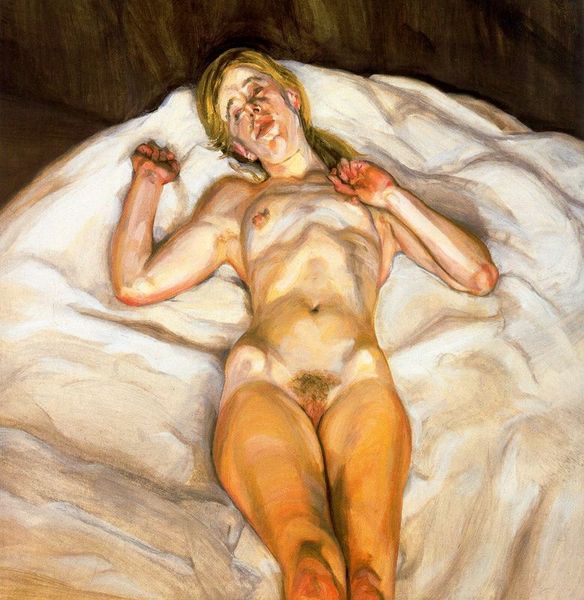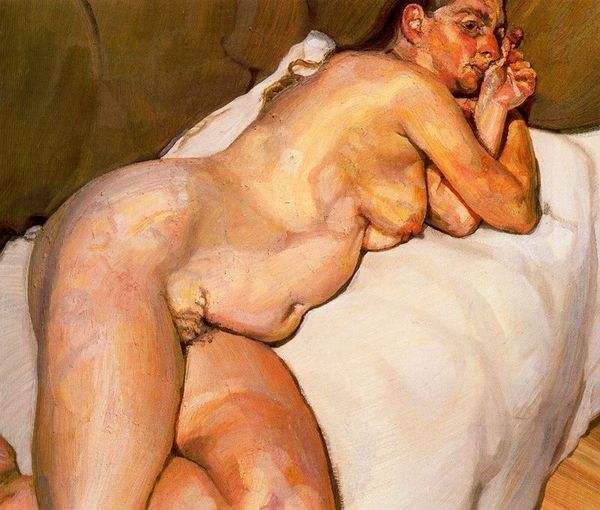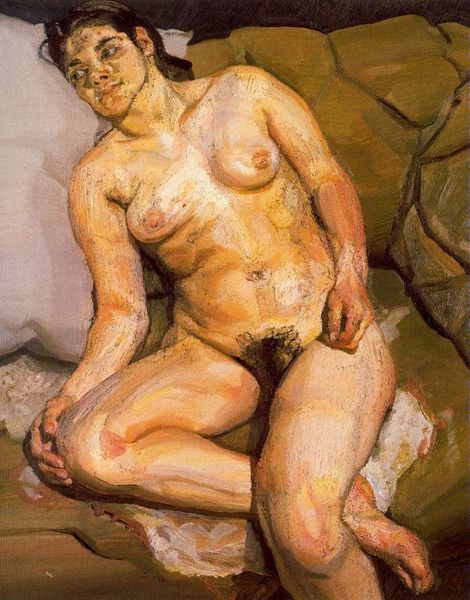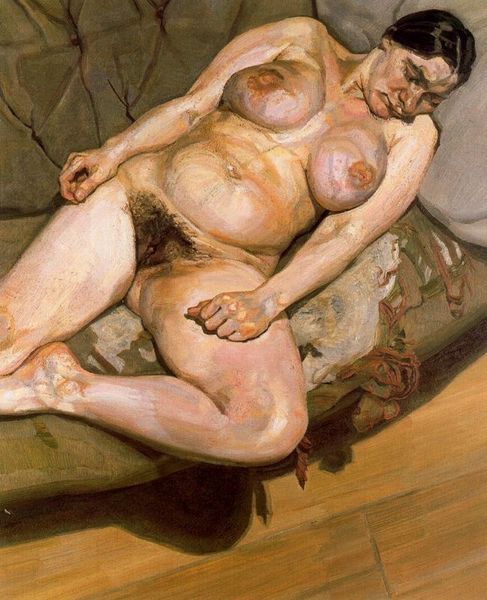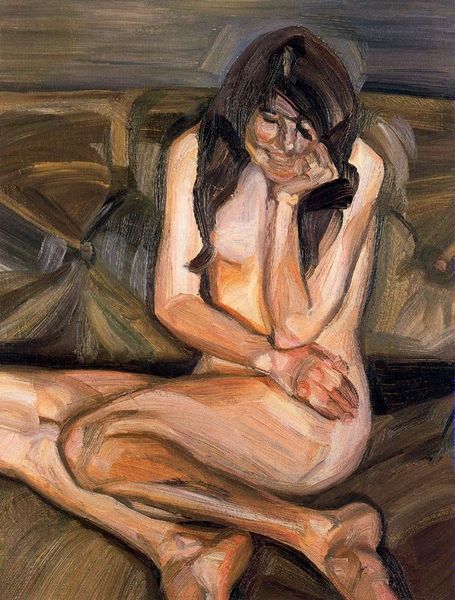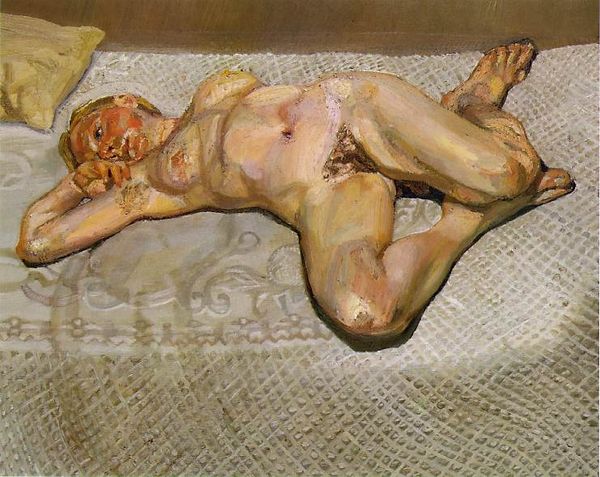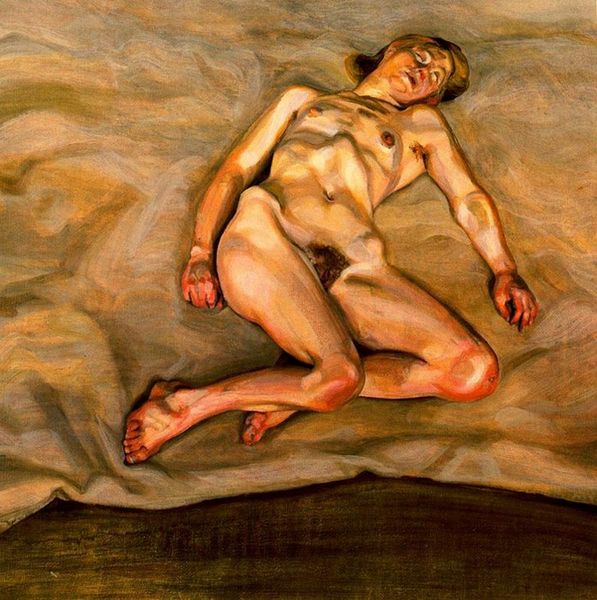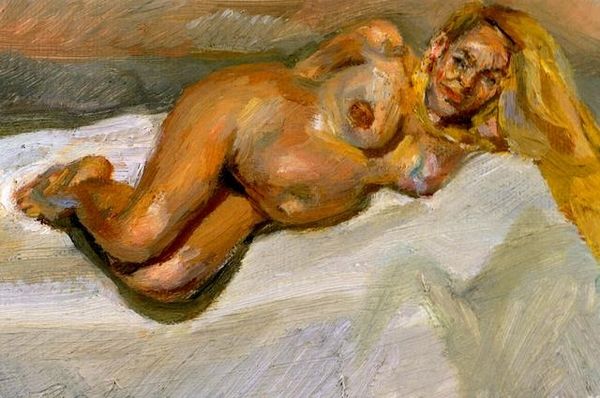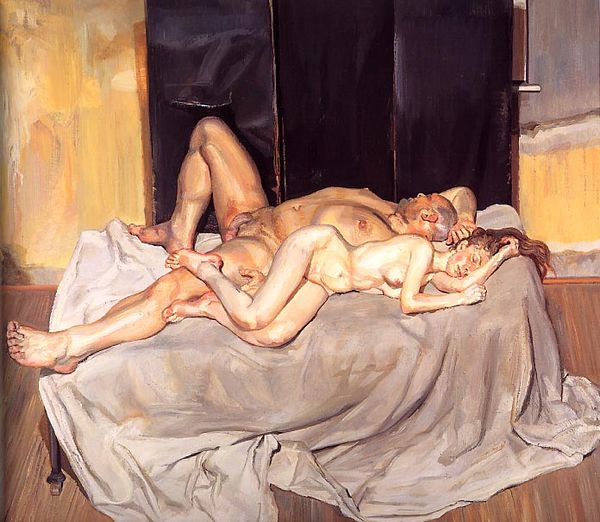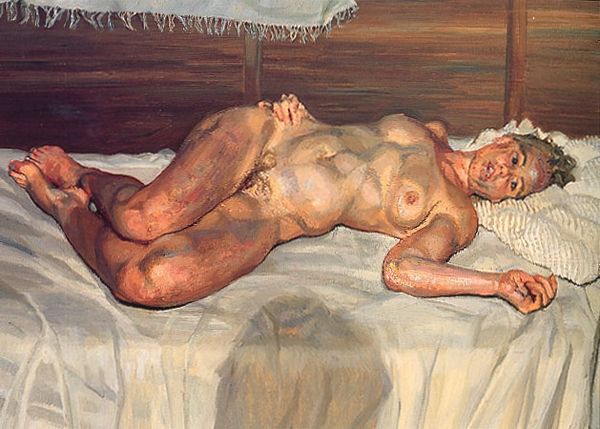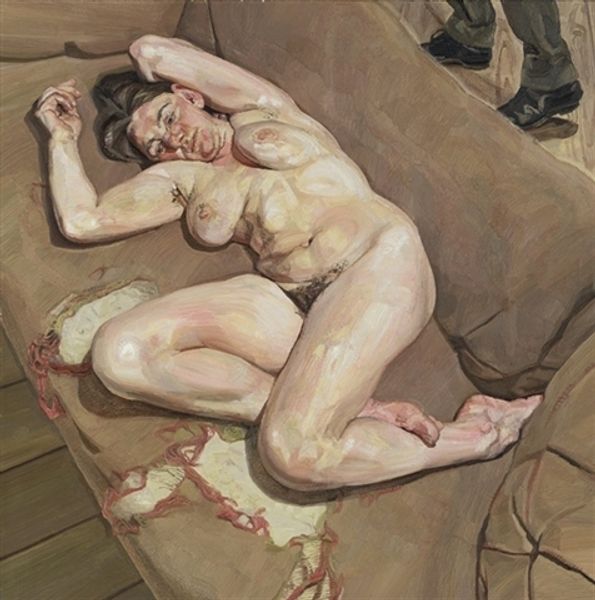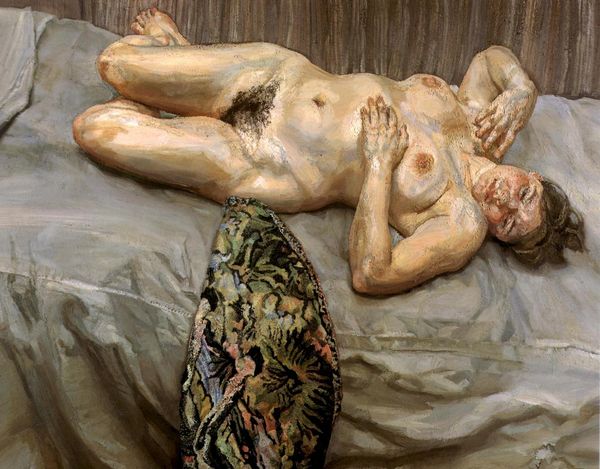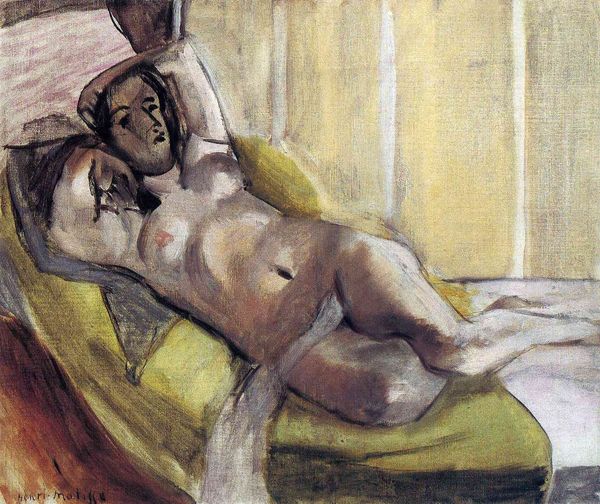
painting, oil-paint
#
portrait
#
self-portrait
#
painting
#
oil-paint
#
school-of-london
#
figuration
#
oil painting
#
nude
#
portrait art
#
modernism
#
realism
Dimensions: 71 x 71 cm
Copyright: Lucian Freud,Fair Use
Curator: Here we have Lucian Freud’s "Blond Girl, Night Portrait" from 1985. It's currently held in a private collection, offering an intimate look at one of his subjects through oil on canvas. What strikes you first about this work? Editor: Immediately, the sheer physicality. The density of the paint application creates a topography across the canvas. Notice the weight and the mass of the figure dominating the space, particularly how her flesh seems to almost melt into the cushions. Curator: Precisely. Freud was renowned for his unflinching gaze and his portraits often challenged conventional ideals of beauty, probing themes of vulnerability and the objectification of the female form. Considering the era in which it was produced, it directly challenges the expectations set on women’s bodies. Editor: And how he uses color is key to conveying that. The palette is muted—ochres, browns, creams—but notice the almost feverish application of pinks and reds to the face and hands. It’s as though the inner life of the body is trying to push its way to the surface, almost rebelling against the imposed stasis of the pose. Curator: It reflects Freud's fascination with capturing not just likeness but the sitter’s raw presence, their very being. Often his work sparked conversations about power dynamics between the artist and model. One must wonder whether this subject, reclined passively and caught seemingly off-guard, can reclaim that authority? Editor: True. And let's look closer at the composition itself. See how the angles of the body and the folds of the blanket are constructed. He juxtaposes the planes of the flesh with hard lines, building up to an entire field of tension. Curator: By positioning his subjects in environments charged with emotional significance, Freud also asked the viewer to actively assess their place within his narratives. Here, that setting certainly seems claustrophobic, underscoring his characteristic themes of existential isolation. Editor: Indeed, and the overall effect achieves something remarkable. This painting refuses to flatter, yet captures an essential, almost brutal truth about the human condition. Curator: Ultimately, a truly unsettling yet captivating view of an individual caught in the complex intersections of art history, intimate encounters, and cultural dialogues. Editor: Leaving you with that lingering feeling—that these considerations of art and its purposes go far beyond the surface, creating deeper perspectives.
Comments
No comments
Be the first to comment and join the conversation on the ultimate creative platform.
